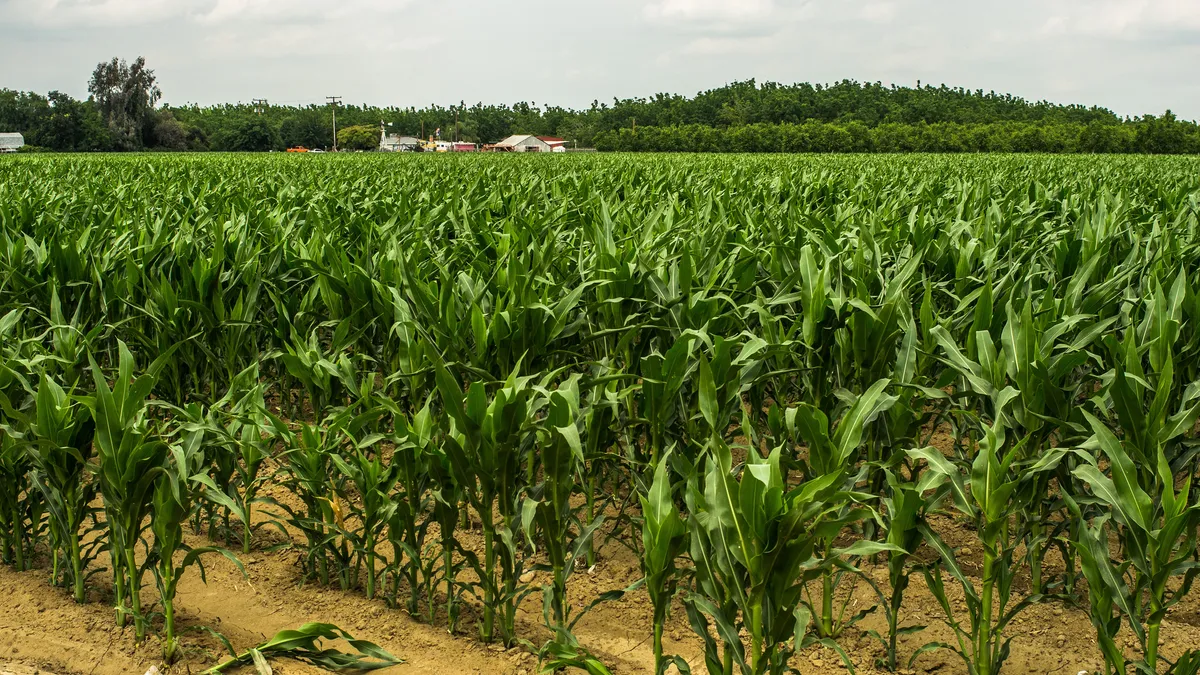Dive Brief:
- About two million low-income Americans receiving Supplemental Nutrition Assistance Program (SNAP) benefits, better known as food stamps, would lose eligibility under the U.S. House’s proposed Agriculture Improvement Act, according to a new report from Mathematica Policy Research. Under the bill that narrowly passed in June, states could remove about 8% of those receiving aid from the rolls, according to the research firm.
- The study found those most likely to be affected are seniors (34%), families with children (23%) and households that include a person with a disability (11%). Of the households with children losing eligibility, 53% live in poverty.
- These estimates do not account for a strict new work requirement component in the bill, which could strip an additional 1.2 million households of aid, according to a separate analysis by the Congressional Budget Office.
Dive Insight:
The impact of this bill will not only affect low-income Americans, it could also hurt the food industry. There are 39 million SNAP recipients in the U.S. and they account for about 7.5% of food retail sales, according to Customer Growth Partners.
The threat of losing two million SNAP customers would have big sales implications in the already thin-margined grocery space, particularly among larger retailers. The U.S. Department of Agriculture, which administers the program, reported in 2016 that 81% of SNAP dollars are spent at superstores like Kroger and Target. Walmart alone collects about $13 billion in annual sales from SNAP recipients – about 18% of spending in the program. Other retailers authorized to accept SNAP benefits, including Target and Aldi, could lose billions a year if the spending power of food stamp recipients is cut. Grocers won’t likely be able to cover the cost of these lost sales by simply raising prices as competition in the category intensifies.
Food and beverage manufacturers like General Mills, Conagra Brands, PepsiCo and Coca-Cola also stand to lose billions in revenue if these changes are adopted. A 2016 study by the USDA found SNAP recipients spent more money on soft drinks than any other item. Frozen prepared foods and desserts were the fourth and fifth most commonly purchased items, together making up roughly 14% of SNAP purchases.
Despite these threats, the National Grocers Association applauded the House bill in April and said the Senate measure “makes positive changes sought by the NGA to make the (SNAP) program more retail-centric.” The Food Marketing Institute also applauded the Senate bill and lauded the House bill for “maintaining many of the efficiencies within SNAP that have helped keep costs down and improve SNAP retailer provisions.”
The House bill is stricter than the Senate’s proposal, which doesn’t include work requirements for beneficiaries, or new income/expense criteria. President Donald Trump supports the House bill, claiming in a tweet that its agricultural subsidies will “bolster farmers and get America back to work.”
At the same time, the NGA and the FMI both came out against the administration’s Harvest Box proposal in February. Even though that proposal was radically different from the House bill – swapping roughly half of the cash SNAP recipients receive for a USDA Foods package that includes items such as shelf-stable milk, pasta, canned fruit and meat – the implications of losing a big chunk of SNAP recipients won't be much different for retailers.
Lawmakers in both the House and the Senate gathered on Capitol Hill this week to start the first formal negotiations to merge both measures into a single bill that would then be voted on by both chambers. The current farm bill expires on Sept. 30.








